THE OPATIJA RIVIERA
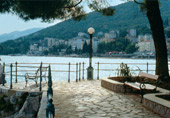 Opatija,
Lovran, Volosko, Veprinac,
Opatija,
Lovran, Volosko, Veprinac,
Ičići, Ika, Medveja, Mošćenička
Draga, Brseč
The best known tourist riviera on the Croatian part of the Adriatic
brings together and takes advantage, at the foot of the Učka
mountain, of all the features of an attractive climatic health
centre and seaside resort. The centuries-old tourism tradition and
culture, the pleasant and healthy climate and the luxuriant
vegetation create an environment for relaxation, active holidays and
recovery. Located on the southwestern coast of the Rijeka Bay, the
Opatija Riviera, with its climatic features (winter 7oC, summer
21,5oC), protected from strong winds and within easy reach of
numerous major European cities, acquired the basis for an impressive
tourism reputation as early as the middle of the 19th century. The
appealing architecture and the space in hotel buildings, sanatoriums
and villas tie on separated pavillions, flowery alleys, parks and
walking paths.
Above, on the Učka slopes, stand the old farmers’ and shepherds’
villages, settlements and towns, the history of which has been
marked by Statutes and church charters. Places that in the gust of
the tourist wave were left apart, are known today as attractive
tourist destinations deserving to be experienced by all, but also to
be protected. The Opatija Riviera is proud of its unique promenade,
the famous «lungomare», and of a whole series of paths in the woods
– both the easier, for recreation and the more demanding,
mountaineering tracks, heading towards the Učka Park of Nature. The
town parks Angiolina and St. Juraj represent the monumental park
architecture of Opatija. The Park of St. Juraj was recently awarded
the prize for the most beautiful Croatian park.
LUNGOMARE
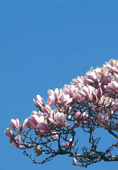 The
seaside promenade, «lungomare», 12 km long, extends from Volosko to
Lovran. Its construction took place between the end of the 19th and
the beginning of the 20th century, following the initiative of the
Company for Opatija’s Embellishment (Abbazianer
Verschönerungsverein). The project leaders were Heinrich Gintl,
Alfred Manussi and Konrad Rubbia. The first stage of the project,
from Volosko to Slatina, was completed in 1889, while the second
stage, the one to Lovran, together with some substages, was brought
to completion in 1911, owing to the engagement of the physician, Dr.
Julius Horteanu. Even today, the «lungomare» offers possibilities of
an exceptional psychophysical recreation for people of all ages,
throughout the year. With no abrupt climbs and descents,
The
seaside promenade, «lungomare», 12 km long, extends from Volosko to
Lovran. Its construction took place between the end of the 19th and
the beginning of the 20th century, following the initiative of the
Company for Opatija’s Embellishment (Abbazianer
Verschönerungsverein). The project leaders were Heinrich Gintl,
Alfred Manussi and Konrad Rubbia. The first stage of the project,
from Volosko to Slatina, was completed in 1889, while the second
stage, the one to Lovran, together with some substages, was brought
to completion in 1911, owing to the engagement of the physician, Dr.
Julius Horteanu. Even today, the «lungomare» offers possibilities of
an exceptional psychophysical recreation for people of all ages,
throughout the year. With no abrupt climbs and descents,
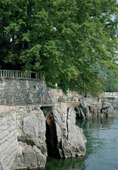 away
from roads and the traffic of town streets, the promenade offers not
only the thalossotherapeutic, curative sea aerosol, but it also
narrates the story of the Opatija Riviera, all along its length.
This story is mirrored in the historicist and secessionist facades
of the many hotels and villas, with numerous monuments, in the
gardens, gazebos and parks. All this is situated along the
lungomare. The most important of Opatija’s sights, but also all the
other things that are mentioned in guidebooks: colours, sounds,
fragrances, all the remarkable signs that have to be discovered and
felt. Here are hidden and unhidden sea access paths, scattered
hidden benches, mighty oak trees and laurel groves touching the sea,
panoramas offering curiosity and peace in the unveiling of all the
spots on the horizon, and old-fashioned lamposts all along the
coastal promenade that allow for unforgettable evening and night
walks.
away
from roads and the traffic of town streets, the promenade offers not
only the thalossotherapeutic, curative sea aerosol, but it also
narrates the story of the Opatija Riviera, all along its length.
This story is mirrored in the historicist and secessionist facades
of the many hotels and villas, with numerous monuments, in the
gardens, gazebos and parks. All this is situated along the
lungomare. The most important of Opatija’s sights, but also all the
other things that are mentioned in guidebooks: colours, sounds,
fragrances, all the remarkable signs that have to be discovered and
felt. Here are hidden and unhidden sea access paths, scattered
hidden benches, mighty oak trees and laurel groves touching the sea,
panoramas offering curiosity and peace in the unveiling of all the
spots on the horizon, and old-fashioned lamposts all along the
coastal promenade that allow for unforgettable evening and night
walks.
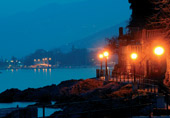 After
your walk, in the immediate vicinity, on the main road, the no. 32
city bus is a convenient way to bring you back to your point of
departure.
After
your walk, in the immediate vicinity, on the main road, the no. 32
city bus is a convenient way to bring you back to your point of
departure.
The duration of a leisurely walk in both directions, including a break: about ten hours.
We suggest three sections:
|
|
- Volosko - Slatina (4 km) one hour - Slatina - Ičići (4 km) one hour - Ičići - Lovran (4 km) one hour |
| The promenade Carmen Sylve, overlooking Opatija, passes through the luxuriant wood vegetation, the famous laurel groves. | |
|
|
Procure itineraries for researchers and tourists |
|
|
Opatija: phone
051/271 310 Ičići/Ika: phone 051/704 187 Lovran: phone 051/ 291 740 |
OPATIJA PARKS
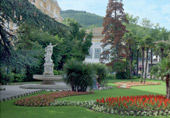 The
Opatija parks are some of the best known park architectural
monuments in Croatia. On a surface of 3.64 ha, between the main town
road and the sea, some 60 fields are located that surround the best
known monuments from Opatija’s history: villa Angiolina, Amalija,
hotel Kvarner, St. Jakov’ Church. Today, this park complex is
divided into two parts, one, along the church leads to the Park of
St. Jakov and the other, near villa Angiolina, leads to Park
Angiolina. Park Margarita is a separate park located on a slope
overlooking the Slatina. It all started in 1844. That year is
recorded as the
The
Opatija parks are some of the best known park architectural
monuments in Croatia. On a surface of 3.64 ha, between the main town
road and the sea, some 60 fields are located that surround the best
known monuments from Opatija’s history: villa Angiolina, Amalija,
hotel Kvarner, St. Jakov’ Church. Today, this park complex is
divided into two parts, one, along the church leads to the Park of
St. Jakov and the other, near villa Angiolina, leads to Park
Angiolina. Park Margarita is a separate park located on a slope
overlooking the Slatina. It all started in 1844. That year is
recorded as the
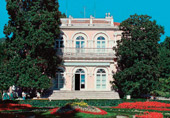 beginning
of Croatian and Opatija tourism. The patrician and merchant Higinio
Scarpa (1794-1866) from Rijeka, erected and arranged a garden in
memory of his spouse, full of rare and exotic plants and trees. In
1882, the Imperial Royal Private Society of Southern railways from
Vienna purchased villa Angiolina, and the park’s development was
entrusted to Carl Schubert from Vienna, President of the Imperial
Royal Society for the development and embellishment of pleasure
gardens. Today the park has in fact retained its original
architecture. Two styles prevail: the English one (winding paths)
and the French one (flowery surfaces, according to the seasons).
Care is devoted to the park
beginning
of Croatian and Opatija tourism. The patrician and merchant Higinio
Scarpa (1794-1866) from Rijeka, erected and arranged a garden in
memory of his spouse, full of rare and exotic plants and trees. In
1882, the Imperial Royal Private Society of Southern railways from
Vienna purchased villa Angiolina, and the park’s development was
entrusted to Carl Schubert from Vienna, President of the Imperial
Royal Society for the development and embellishment of pleasure
gardens. Today the park has in fact retained its original
architecture. Two styles prevail: the English one (winding paths)
and the French one (flowery surfaces, according to the seasons).
Care is devoted to the park
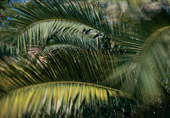 on
a daily basis. Although it is adorned by more than 150 plant
species, it should be mentioned that until fifty years ago, this
number even exceeded 220 types. The most prominent are: laurel
(Laurus nobilis), the leafless magnolia (Magnolia yulan, Magnolia
grandiflora), the high and low Chamaerops ecelsa, Chamaerops
humilis, the caucasian fir-tree (Abies nordmanniana), the Pančić
spruce (Picea omorika), ceddar-trees (Cedrus), Australian laurel
(Pitosporum tobira), pines ( Pinus pinea), cherrylaurel (Prunus
lauricerasus), olives (Olea sativa), wood date-palms (Phoenix
sylvestris), sequoias (Sequoia) and camelias (Camelia japonica),
that have become some of the symbols of Opatija.
on
a daily basis. Although it is adorned by more than 150 plant
species, it should be mentioned that until fifty years ago, this
number even exceeded 220 types. The most prominent are: laurel
(Laurus nobilis), the leafless magnolia (Magnolia yulan, Magnolia
grandiflora), the high and low Chamaerops ecelsa, Chamaerops
humilis, the caucasian fir-tree (Abies nordmanniana), the Pančić
spruce (Picea omorika), ceddar-trees (Cedrus), Australian laurel
(Pitosporum tobira), pines ( Pinus pinea), cherrylaurel (Prunus
lauricerasus), olives (Olea sativa), wood date-palms (Phoenix
sylvestris), sequoias (Sequoia) and camelias (Camelia japonica),
that have become some of the symbols of Opatija.
|
|
A guidebook to the Opatija parks is available from the Opatija Tourism Office. |
|
|
Town of
Opatija Tourism Office phone 051/271 310 tzgr.op@ri.t-com.hr www.opatija-tourism.hr |

